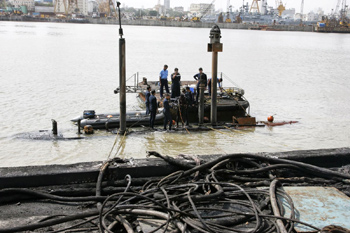INDIAN ARMED FORCES CHIEFS ON OUR RELENTLESS AND FOCUSED PUBLISHING EFFORTS

The insightful articles, inspiring narrations and analytical perspectives presented by the Editorial Team, establish an alluring connect with the reader. My compliments and best wishes to SP Guide Publications.

"Over the past 60 years, the growth of SP Guide Publications has mirrored the rising stature of Indian Navy. Its well-researched and informative magazines on Defence and Aerospace sector have served to shape an educated opinion of our military personnel, policy makers and the public alike. I wish SP's Publication team continued success, fair winds and following seas in all future endeavour!"

Since, its inception in 1964, SP Guide Publications has consistently demonstrated commitment to high-quality journalism in the aerospace and defence sectors, earning a well-deserved reputation as Asia's largest media house in this domain. I wish SP Guide Publications continued success in its pursuit of excellence.
- MoD initiates comprehensive review of Defence Acquisition Procedure 2020, pushes for defence reforms
- G7: The Swansong
- Kalinga Connect: South Asia to Polynesia
- Advanced MRSAM for India for a greater firepower
- Must Credit DRDO for Operation Sindoor, now what is next for defence R&D?
- Operation Sindoor | Day 2 DGMOs Briefing
- Operation Sindoor: Resolute yet Restrained
Navy wants distress beacons for submarines

Addressing safety concerns on its submarine fleet, the Indian Navy is looking to procure 30 Submarine Emergency Position Indicating Radio Beacon (SEPIRB) systems along with suitable SSE sleeves. The SEPIRB is a radio signalling device used for locating a submarine in distress. It is stowed onboard a submarine inside the pressure hull. At the time of emergency, it is retrieved from storage and launched either from surface or submerged condition. The SEPIRB surfaces and transmits a digital message to the COSPAS-SARSAT satellite network, which obtains the position of the SEPIRB to within 100 yards using the onboard GPS receiver. The transmitted message contains the current elapsed time since activation, the unique EPIRB ID and initial location obtained by GPS. If no GPS location is obtained and/or transmitted by the SEPIRB, then its location (to within approximately two miles) will be determined by standard COSPAS-SARSAT methods. Six hours after activation, the SEPIRB begins to transmit a 121.5 MHz beacon which is used both in locating / retrieving the buoy and as a backup to the COSPAS-SARSAT message transmissions.





